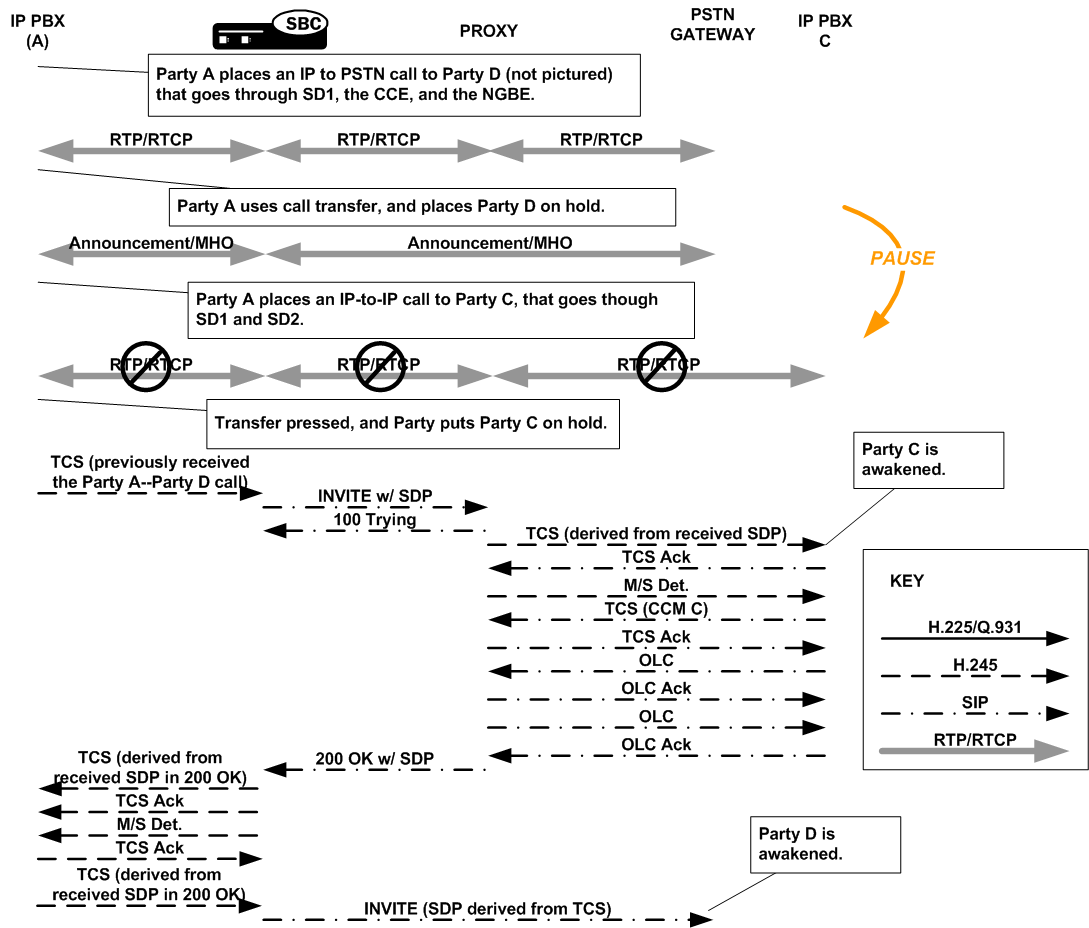Transfer
The call flow described in this section recalls the diagram at the top of the H.323 Endpoint-Originated Call Hold and Transfer section, where endpoints A, B, and C are H.323 devices and endpoint D is a SIP device. When you follow the signaling and media flows, note that there are two Oracle® Enterprise Session Border Controller s in the call transfer and two sets of SIP/H.323 translations that take place. The first Oracle® Enterprise Session Border Controller translates H.323 to SIP, and the second performs the same operations with the protocols reversed.
In the scenario pictured, Party A is on a call with Party D, but wants to transfer Party C to Party D. Party A places Party D on hold, and then makes the call to Party C. Party A then puts Party C on hold, pressing the transfer button. You can see that Oracle® Enterprise Session Border Controller 1 receives a TCS from the IP PBX, which is then translated to SIP. Oracle® Enterprise Session Border Controller 2 receives it, performs the required protocol translations, and then opens a session with Party C via another IP PBX. Once this session is up and Party D is awakened, channels are established for media exchange.
In order to redirect the media so that it flows between Party C and Party D, the Oracle® Enterprise Session Border Controller 1 and IP PBX C exchange OLC and OLC Ack messages that contain address information for Party C and for Party D. Address information for both parties is contained in the OLC Ack messages that the Oracle® Enterprise Session Border Controller exchanges with the IP PBX. IP PBX A does not move forward with the call until it has the necessary address information.
Even though Party A’s participation in the call stops early in this scenario, the IP PBX with which it is associated keeps the signaling sessions with the Oracle® Enterprise Session Border Controller alive to manage the transfer.




